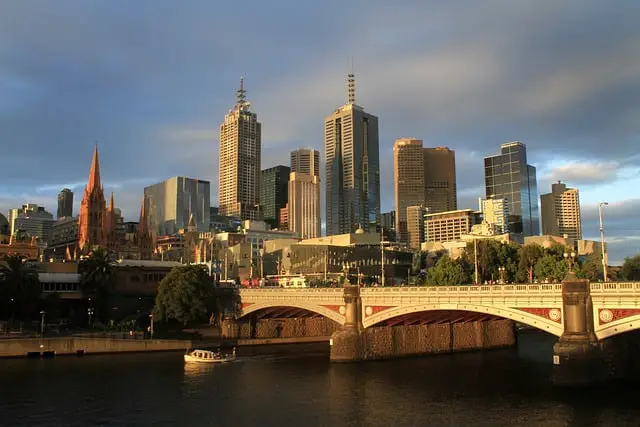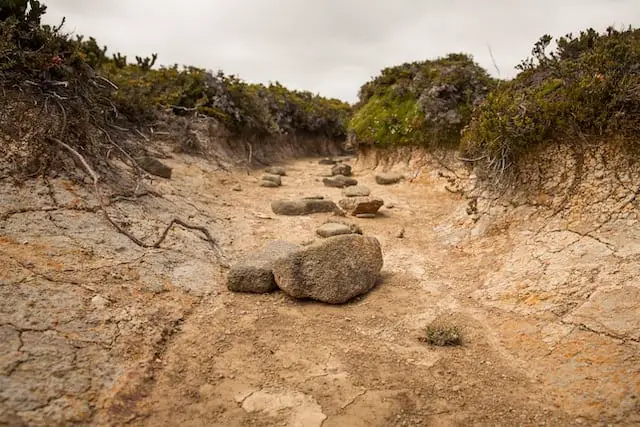
Melbourne, the capital city of Victoria, Australia, is known for its vibrant culture, bustling streets, and natural beauty. However, like many other cities around the world, Melbourne faces challenges related to water security due to its rapidly growing population and changing climate. In response to these challenges, the Victorian Desalination Plant was built as a sustainable solution to ensure a reliable supply of water for the city’s residents and industries. To shed a bit more light on this well-known desalination facility, I came up with some key facts to summarize the project.
The Victorian Desalination Plant aka Wonthaggi Desalination Plant, located just outside of Melbourne is the largest desalination plant in Australia. Utilizing reverse osmosis technology, the plant has the ability to produce 410 cubic metres of drinking water daily, meeting 33% of Victoria’s water demand.
It produces 410 cubic metres of water per day
The Victorian Desalination Plant has a production capacity of 410 cubic metres of water per day which equates to 150 billion litres (150 GL) of water per year, this gives it the title of Australia’s largest desalination plant! The plant has the ability to meet around 33% of Melbourne’s water needs when operating at full capacity.
If you are interested in some other destination plants around Australia, I encourage you to read the article Desalination Plants in Australia: The 10 Largest, if you perhaps have a broader scope in mind. why not check out my article on the ten largest desalination plants in the world Desalination Plants Around The World: The Ten Largest.
It covers an area of approximately 150 hectares

Located in the town of Wonthaggi, just outside of Melbourne, Victoria in Australia’s southeast, the plant covers an area of about 150 hectares and consists of a seawater intake system, pre-treatment facilities, reverse osmosis membranes, and post-treatment facilities.
The Victorian Desalination Plant certainly has a large footprint, however, if you are interested in the largest desalination plant on the planet, read my article Jebel Ali, The World’s Largest Desalination Plant for a succinct guide on the topic.
The plant utilizes reverse osmosis technology
The Victorian Desalination Plant uses reverse osmosis technology, which is a process that removes salt and other impurities from seawater by forcing it through a semi-permeable membrane. The plant uses advanced energy recovery systems to reduce its energy consumption and minimize its carbon footprint. The energy recovery systems use the pressure generated by the reverse osmosis process to drive turbines and generate electricity.
It is owned by the state government and operated by Aquasuare
The Victorian Desalination Plant is owned by the Victorian Government and is operated by AquaSure, a consortium of companies that includes SUEZ, Thiess, and Macquarie Capital. AquaSure is responsible for the operation and maintenance of the plant, as well as the delivery of high-quality drinking water to Melbourne Water.
Built in response to drought, it has never been at full capacity
The plant was built as a response to the Millennium Drought, which lasted from 1997 to 2010 and was one of the worst droughts in Australia’s history. Funnily enough, the desalination plant was immediately put on standby after its initial commissioning due to Melbourne’s main water sources being at 81% capacity at the time of commissioning and not requiring any additional water. Due to the relatively unpredictable nature of Melbourne’s rainfall, the desalination plant forms a part of Melbourne’s water management plan, particularly in times of prolonged drought, similar to what occurred when construction began on the facility in 2007.

It has surprising sustainability credentials
One of the key sustainability features of the Victorian Desalination Plant is that it relies on renewable energy. The plant is powered by wind and solar energy, which helps to reduce its carbon footprint and make it more environmentally friendly. In fact, the plant is the largest user of renewable energy in Victoria, generating up to 100% of its power from renewable sources.
Another important sustainability feature of the Victorian Desalination Plant is its water efficiency. The plant is designed to use the latest water-saving technologies and techniques, which helps to reduce its water consumption and make it more sustainable. For example, the plant recycles around 90% of its water, which means that it uses far less water than traditional desalination plants.
In addition to these features, the Victorian Desalination Plant is also designed to have a minimal impact on the local environment. The plant has been constructed using environmentally sustainable materials, and it is designed to be energy-efficient and low-emission. Furthermore, the plant is located near the coast, which means that it can use seawater for desalination, rather than relying on freshwater sources.
It has received many awards and accolades
The Victorian Desalination Plant is an innovative infrastructure project that has received recognition and awards for its contribution to sustainability and engineering excellence. Here are some of the awards that the plant has won:
- Engineering Excellence Awards: The Victorian Desalination Plant was awarded the Australian Engineering Excellence Awards in 2013. The award recognized the project’s engineering excellence in delivering a sustainable water supply solution for Melbourne.
- Sustainability Awards: The plant was also recognized at the 2013 Banksia Sustainability Awards, where it won the Built Environment and Infrastructure category. The award recognized the project’s commitment to sustainability and the environment, including its use of renewable energy and its minimal impact on the local ecosystem.
- Green Globe Awards: The Victorian Desalination Plant won the Energy Efficiency Award at the 2013 Green Globe Awards. The award recognized the plant’s commitment to using renewable energy and its energy-efficient design, which has helped to reduce its carbon footprint.
- National Infrastructure Awards: The plant was also a finalist in the 2013 National Infrastructure Awards, which recognized the best infrastructure projects in Australia. The plant was recognized for its engineering excellence and its contribution to ensuring Melbourne has a reliable source of water.
- Victorian Manufacturing Hall of Fame: In 2014, the Victorian Desalination Plant was inducted into the Victorian Manufacturing Hall of Fame. The award recognized the plant’s contribution to manufacturing excellence in Victoria, including its use of innovative technologies and its commitment to sustainability.


